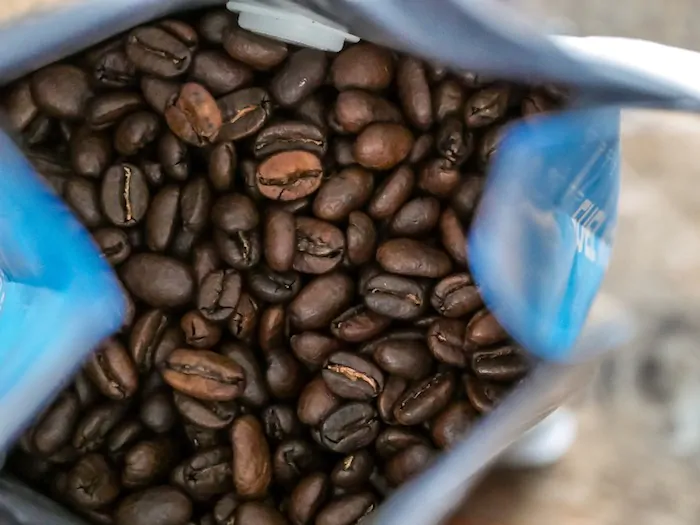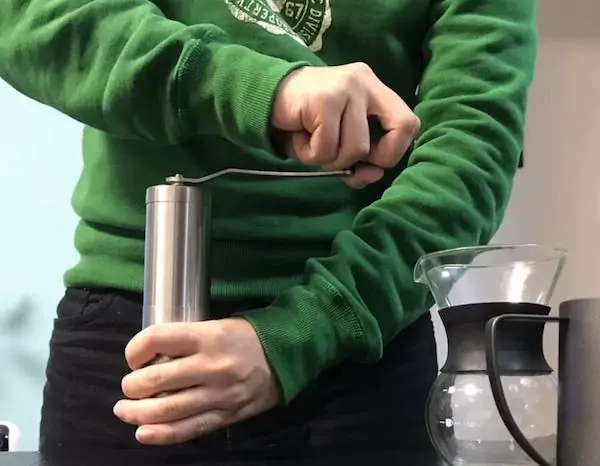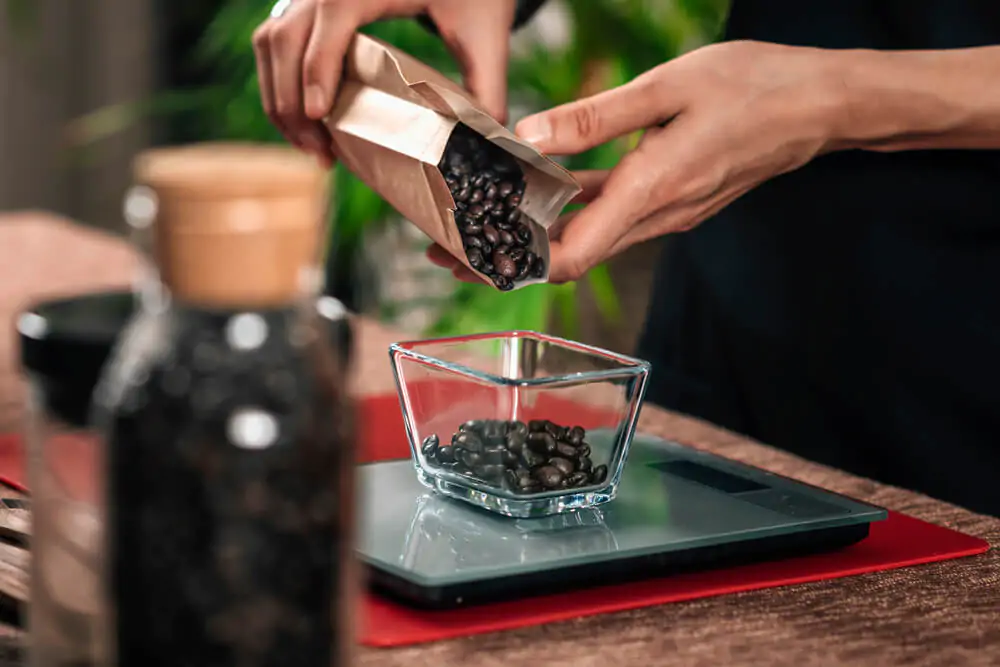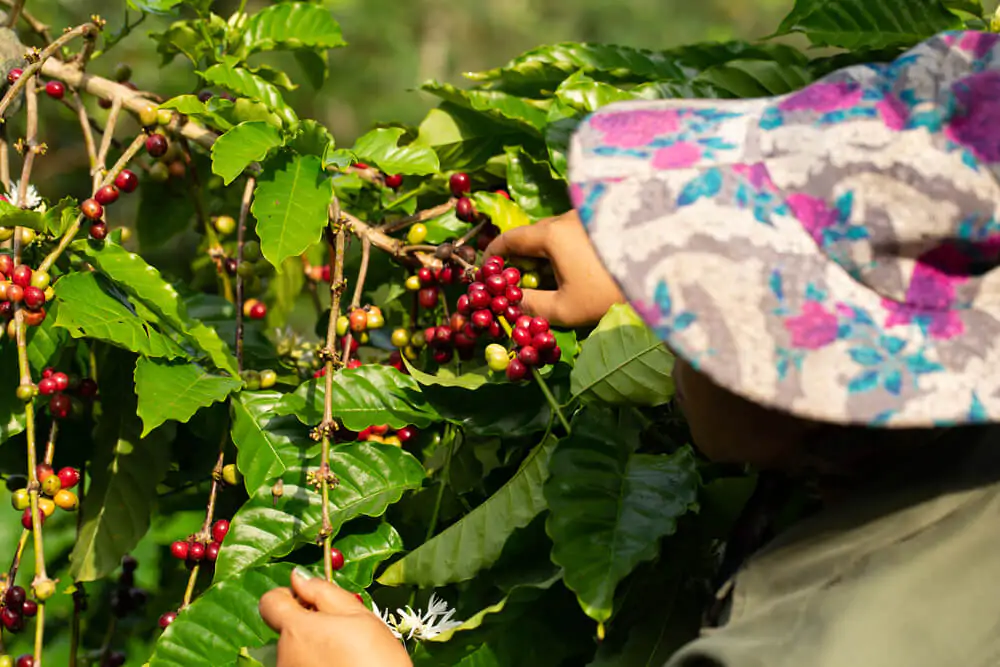Is it cheaper to grind your own coffee beans? Are you having trouble deciding between preground and whole bean coffee regarding price? Read on to discover the costs and options to get the best brew on budget.

Chances are, you’ve walked through the coffee aisle at your local grocer’s shop and, undoubtedly, sensed a difference between pre-packaged, preground coffee and the freshly ground coffee prepared right next to it, given the heavenly aroma.
At the same time, you may have eyed the wide selection of whole bean coffees on display right next to the in-store coffee grinder and wondered if, or was even convinced that purchasing your coffee freshly ground offers the same taste as whole bean coffee and is even cheaper than purchasing the whole beans and grinding them yourself.
Or perhaps you simply didn’t have a coffee grinder at home and thought that purchasing your coffee freshly ground or pre-ground would save you money. In either case, whole bean coffee offers superior results over pre-ground and in-store ground coffee, but is it cheaper to grind your own coffee beans?
The answer is yes, in the long run. But to understand why grinding your own coffee beans is more cost-efficient over time, let’s take a look at whole bean coffee vs. preground coffee.
Preground Coffee vs. At-Home Ground Coffee
When you purchase preground coffee or coffee that has been ground prior to packaging and stored on the shelf, it is made from whole coffee beans that have already been ground, which makes it easier and more convenient to make coffee. However, they are often made from low-quality beans, and some reports show that they sometimes also contain fillers other than coffee beans, which can also affect the taste.
Furthermore, once the coffee beans have been roasted, they release gasses that begin to break down their flavor and freshness and pregrinding the beans, even when you freshly grind them at the store and then bring them home, only further accelerates this process because once the beans’ oils are released through grinding, they begin to evaporate, which causes the coffee to have less flavor.

Add to this, each time you open your coffee bag or container to get coffee; it allows oxygen in, which causes more of the beans’ oils to evaporate each time, resulting in even more loss of freshness and flavor. However, since whole bean coffee is much larger, it takes oxygen much longer to penetrate the beans, so they retain flavor and freshness longer.
With pre-packaged, preground coffee, in many cases, you also don’t get to select the grind size of the coffee, which, depending on the type of coffee maker or brewing method, can be a problem. For instance, most espresso machines call for using a fine grind; otherwise, a more coarse grind can prevent the water from properly circulating the grounds, which can result in an awful cup of espresso.
On the other hand, when you purchase whole bean coffee, the grinding is left up to you, which gives you more control over the ground size of the coffee for maximum flavor. It also gives you more options for coffee types, especially if you have more than one type of coffee maker.
The Price of Grinding Your Own Coffee vs. Purchasing Preground Coffee
Various factors go into the cost of coffee, including the quality of beans used. Because whole bean coffee tends to be made using high-quality beans, in many instances, it can cost more than pre-ground coffee. However, there are some high-quality pre-ground coffees that cost more than whole bean coffees.
Otherwise, as mentioned earlier, preground coffee is often made with low-quality beans, additives, and fillers, which contribute to its low cost. It is also made in greater volume, which also helps keep the price low.
The weight of the coffee sometimes also affects the price, and since preground coffee is smaller and weighs less than whole bean coffee to ship, it can also be reflected in the price. Whole bean coffees also need to be shipped faster for maximum freshness, so it also affects the cost.

The brand will also dictate the price, as many brands generally price their whole bean coffee and preground coffee the same per pound, whereas some do not.
If you do not already own a coffee grinder, you will also have to factor this into the cost. However, coffee grinders range from just $10 bucks to $1,000, which enables you to select one based on your particular budget.
In the end, which is cheaper, buying preground coffee or grinding your own coffee beans will depend on your personal taste and freshness preference. If you relish the best experience that coffee has to offer, then you may pay more for whole bean coffee upfront, but it also lasts longer, which makes it more cost-efficient in the long run.
Related Article: HOW MUCH DOES A GOOD COFFEE GRINDER COST?
About Whole Bean Coffee
Coffee beans originate from the small red fruit of the coffee plant.
During harvesting, the exterior part of the fruit is removed, giving way to the interior portion, which contains the coffee beans. The coffee beans, which consist of two halves, are then processed into whole bean coffee.
There are two main types of whole bean coffee: single-origin, whole bean coffee , and whole bean coffee blends.
Single-origin coffee beans are just what the name implies: sourced from just one specific region. Because they are sourced from just one particular region, they have pronounced flavors and distinct characteristics that are unique to that area.
Two of the most prominent regions of single-origin coffee are Central America and South America, whose coffees are mainly sourced from Columbia, Costa Rica, and Brazil. Coffees from these regions tend to have a mild flavor with hints of bright flavors.
Meanwhile, Africa and Arabia are also notable for their single-origin whole bean coffees, which are hailed for their exotic, rich, winey taste with fruity undertones. There are also Pacific region single-origin coffees, which boast a more savory, smooth taste with earthy undertones.
And then there are whole bean coffee blends, which contain various single-origin beans. These types of coffees typically combine different coffee beans to enhance the flavor of a single-origin bean or to simply create different flavors in the coffee.
When coffee beans are initially harvested, they are green and soft with a grass-like scent. However, they are then roasted into brown beans with a rich aroma that we have come to know as coffee.

Coffee beans are roasted until they are either dark, medium, or light-colored, which also affects the flavor.
Dark roast coffee beans, which are also sometimes used to make espresso, are roasted until they are almost black, and given the long roasting process, it also creates a sheen of oil on the surface of the beans. Because the beans are heavily roasted, they also have a smoky flavor with a bitter taste; however, they have less caffeine than both light and medium roast coffee.
Coffee beans that have been medium-roasted are dark brown in color, and they are also free of oils on the surface. The medium roast also gives them a more well-rounded taste and scent than light roast coffee but a higher acidity level. They also have more caffeine than dark roast coffee but less than light roast.
Light roast coffees are pale brown with a nutty flavor, and since they are only slightly roasted, no oils are released out of the bean. However, because they are only slightly subjected to heat during the roasting process, they also retain most of the caffeine from the bean. They are also known to have an acidic taste.
Because whole bean coffee comes directly from the coffee plant, it preserves more of the freshness and flavor of its origin up until it is freshly ground and brewed.
For maximum results, whole bean coffee should be stored at room temperature in a coffee container with an airtight lid. However, avoid using a see-through container, as it can permit light in, which can ruin your coffee.
If you still can’t decide, check out our article Ground Coffee Vs Whole Bean.
Is It Cheaper To Grind Your Own Coffee Beans: Related Questions
What is the Best Type of Whole Bean Coffee to Start With?
If you are new to whole bean coffee, it may be best to start with a single-origin coffee like this, which will enable you to experience the different tastes and flavors of various regions until you find a flavor profile that you like. Once you have determined the flavors you like, then, if you prefer, simply move onto more complex whole coffee bean blends that incorporate those flavors.
What is the Best Type of Coffee Grinder to Begin With?
Fortunately, even the most basic coffee grinder will still produce a superior flavor to preground coffee, provided you are using a basic coffee maker; however, for best results, you should begin with a simple blade or manual grinder before moving onto more elaborate coffee grinders, which require a bit more knowledge and skill to perfect the grind size.
Manual grinders are also small and easy to carry, which means they can also be brought along when traveling, and more.
How Long Does it Take to Grind My Own Coffee?
How long it takes to grind your own coffee will depend on the type of grinder you are using, as well as the ground size you are trying to achieve. The number of coffee beans you are grinding may also affect the time it takes to grind your coffee; however, the average manual grinder usually takes between 30 to 40 seconds to coarsely grind 10 grams of coffee.
Meanwhile, a basic electric grinder typically takes about 10 to 15 seconds for a coarse grind.
Related Article: HOW LONG DOES A BURR COFFEE GRINDER LAST?

